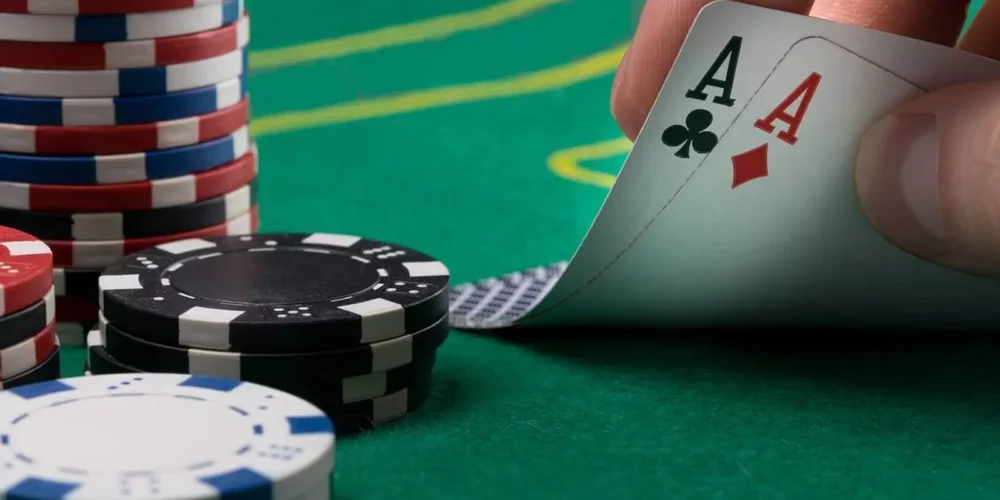Texas Hold’em is undoubtedly the most popular poker game in the world and learning how to deal it is an invaluable skill for any player. If you participate in many home games where the poker dealer task rotates from player to player, it is beneficial for you to learn and understand how dealing works, as well as how to watch other players on poker dealing duty.
How to Deal Texas Hold’em
Last update: May, 2024

What Exactly Is Texas Hold’em?
Texas Hold’em is a variety of poker known to be the favorite one among players, to the point that some of them have only learned how to play this variant of the game. It can be enjoyed in every big tournament, such as in the World Series of Poker, the European Poker Tour, and the World Poker Tour.
The rules of Texas Hold’em are not exceedingly complicated. This and the hand-ranking makes it very alluring to all players, but fully mastering the game takes a lot of time, effort, and countless hours of practice. The amount of plausible combinations and outcomes is so large that if you play at the highest levels of the competition, perfecting your skills in order to win will be a very complex exercise.
If this is your beginning as a Texas Hold’em player, you should start learning the basics and keep adding to your experience as you grow and hone your abilities. Understanding the gameplay and the game’s many strategies is key to becoming a great player.
Texas Hold’em Main Rules
The aim of this poker variant is to effectively use your two hole cards and try to build the best five-card poker hand with the help of the community cards. In this sense, it is not very different from other games like the five-card draw, but it differs on the system that players use to try to assemble a winning hand. During a game of Texas Hold’em, a participant can bluff and make the others fold even better hands.
The basic rules to start a game of Texas Hold’em are the following:
- The croupier deals two face down cards to every player; these cards are what we called the ‘hole cards’.
- Next, there are some betting rounds where five more cards are being dealt facing up in the middle of the table.
- Those five face-up cards are called ‘community cards’, and every player has the liberty to use any of those cards for their benefit. The point is for a player to make the best five-card poker hand possible by combining the hole and the community cards.
The five community cards that the croupier deals are set down on the table in different steps:
- The Flop: this is the name given to the first three community cards.
- The Turn: this is what we call the community card number four.
- The River: this is the fifth and last community card dealt.
With a total of seven cards (two hole cards and five community cards), the purpose of the game is to build a five-card poker hand that can beat the other competitors’ hands. You can use both, one, or none hole cards and combine them with the community ones however you want; if the five community cards can form a better hand, you are allowed to just use those and leave your hole cards aside. The point is to be able to make the best hand combo.
If while betting every player but one ends up folding, the last standing player gets to win the pot without even having to show any of the cards. This is why it is not always necessary to have the best combination in order to win in Texas Hold’em and the ability to bluff is a very important element of the game. However, if two players make it after all the community cards have been dealt and all the wagers have been set, the best five-card hand will become the winner of the pot.
Down below, we are going to explain in detail some of the more specific rules, including how to deal in a game of Texas Hold’em and the way betting works.
Shuffling and Dealing
The 52 cards that make up a standard poker deck tend to be fanned out by the dealer as a way to confirm to the audience that the deck is complete, and the same is done whenever a new deck comes into play. We suggest keeping this going throughout the whole game and checking the cards at intervals to make sure everything is correct.
At first, shuffling requires some practice, and no matter if you are shuffling by hand or using an automatic shuffler, you should shuffle the deck twice when you first bring it out. Afterwards, cut the cards and then mix up the cards for a third time.
When playing Texas Hold’em, there is a rotation around the table of a dealer button and mandatory bets called the small blind and the big blind. After the blinds are out, it is the time for each player to receive one card at a time, starting with the person that is clockwise from the dealer button, until all the players have been dealt two cards, the aforementioned hole cards.
How to Start Playing Texas Hold’em
Texas Hold’em is known to be a community card poker game that puts a focal point on both the bets and the cards that are being played. The rules stay always the same but there are, however, certain end goals that differ depending on if you are playing a Texas Hold’em tournament or a cash game.
During a cash game, there are from two to ten players around the table, and the aim is to try to earn as many chips as possible. The chips are won by pots after a player shows the best hand at the end of the round or after all the other players have folded. Tournaments are very similar to the rest of the poker games, except with some extra rules and twists.
The Dealer Button
When players are sitting around the table, you will give chips to each of them. We will shortly explain the types of chips that the players get, but beforehand, we will explain the process of the dealer button.
A player is always chosen to start with the dealer button. In Texas Hold’em there is always a rotating dealer, which means that one player will start dealing and after that hand is finished, the role of the dealer will be passed onto the player directly to their left. In order to choose the first dealer for the first round, you can give every player one card or make them choose one from an array of cards facing down on the table. Whichever player gets the card with the highest value will be the opening dealer.
The Button
When there is a professional dealer around the table at a casino or at a live poker event, there will still be a dealer button that will rotate around the table. Although there will be a physical croupier, whoever has the button is viewed in the game as the dealer and will act last on that hand. After the hand is finished, the dealer button will be given to the player on the left.
The Blinds in Texas Hold’em
There are two types of blinds in Texas Hold’em, the small blind and the big blind. A blind is a forced bet that needs to be made by two players in order to ensure that the pot has some chips in it that are worth playing for. If there were to be no money in the pot, the players would fold often, making the game slow and boring.
The player sitting to the dealer’s left is in charge of placing the small blind, and the player by the left of the small blind player will be the one putting out the big blind, which normally consists of doubling the amount of the small blind. The stakes of the game will depend on how large the size of the blinds is. Normally, players would buy in for no less than 100 times the quantity of the big blind. When you are playing at a live casino or a poker room, the largest and smallest amounts that a player can be in for will also be related to the blinds.
When it comes to the chips, if you are online or at a live casino, the chips will be given to you in increments that will depend on the stakes that you are playing. You need to learn which chips to use and how to allocate them. In order to see which chips we will need to use for the game, we have to figure out the blinds that have been set first.
Players need to have plenty of chips for the game to run with ease. 10% of their total chips will be a good amount for the smallest denomination, since they are only used in the small blind. Normally, most of the Texas Hold’em betting is done with chips that are larger than the ones used for that small blind. After the first blinds are in the pot, you can start dealing the initial hand.
Betting Rules
The player sitting to the left of that one holding the dealer button will be dealt the first card and then, the dealer will rotate clockwise around the table. The players will receive two cards, one at a time, that will be set facing down. These are the hole cards and are for each player’s use only; together with the community cards, they will be part of the five-card poker hand.
Every Texas Hold’em game consists of one to four rounds of bets. A hand finishes when all the players but one have folded or when the fourth betting round is done. Then it is time for the showdown (which we will be explaining shortly) and the pot will be given to the player with the best hand. If there is a tie, the pot is evenly divided by the two players.
The Ante
Another compulsory bet besides the blinds in Texas Hold’em is the ante. An ante normally happens when everyone pitches in an amount that is smaller than the blinds because there is a need to speed up the game. This is done to the pot pre-flop, and it normally happens during the later stages of the game, although some tournaments also include it from the beginning and even make large ones.
The Pre-Flop
Once all the players have been dealt the hole cards, the pre-flop betting gets started. This round starts with the action taken by the player sitting to the left of the one that placed the big blind. During a Texas Hold’em game each player takes their turn, and a player has three choices to begin with:
- Fold: Add nothing to the pot and release their hand until it is time for the next deal to play again.
- Call: Equal the quantity of the big blind, also known as ‘limping in’.
- Raise: Increase the bet by duplicating the amount of the big blind.
After the player is done with their action, it is the turn of the player to their left. All the players have the same three options: to fold, to call the bet (if the previous player has increased it, then the new player has to call that amount; if not, it is the amount of the big blind the one that needs to be called), or to raise. When it comes to Limit Hold’em, the raise is the amount of the initial bet plus the amount of the previous one. In No Limit Hold’em, players can use all their chips when placing a bet at any time.
The Flop
The flop is dealt right after the pre-flop round is finished. Now it is the turn for the community cards to appear. The dealer will place the top card in the deck facing down on the table (the ‘burn’ card, not for playing) and then will add three face-up cards to the table. These community cards can be used by players to create their winning five-card poker hand.
After the flop, the first post-flop bet is made in a similar way to that of the pre-flop bet. However, there are two differences:
- The following player with a hand to the next of the dealer will be the one to go.
- Calling is free and the next player can either check or bet.
In Limit Hold’em, the bet equals the quantity of the big blind. In No Limit Hold’em, it is at least the double of the big blind and even all of the chips of a player.
The Turn
After the flop’s betting round, the following steps are very similar to the previous ones. The dealer, once again, burns another card, leaving it facing down on the table, and then proceeds to deal one more community card next to the three flop cards. Then it is time for the next round of bets.
In Limit Hold’em, the third round of betting is similar to the one in the flop, but the size of the bet is multiplied by two. In No Limit Hold’em, the player can bet any chips they want as long as the quantity doubles the big blind or any previous bet.
The River
If there is more than one player that has not folded yet, the river is dealt in the same way as the turn. The river is the last dealt card, making it the fifth community card. The betting round is also exactly the same as that of the turn.
The Showdown
When after the last betting round there are two or more players standing, it is time for them to show their final hands and determine a winner. The dealer must eliminate all losing hands before giving the prize to the winning one. Under no circumstances a player can show any of their cards to another player. If, somehow, one player were to observe someone else’s card, the rest of the table would have the right to observe that card as well in order to avoid unfair advantages.
If wagering happens during the final round, the last player to bet will be the first one showing their hand. When a player has the feeling that their hand will clearly be the winner, they should not wait for this and immediately show the cards in order to accelerate the process. When there is a side pot as well as a main pot, those who are playing on the side pot should show their cards first.
Hand Rankings
When after the last betting round there are two or more players standing, it is time for them to show their final hands and determine a winner. The dealer must eliminate all losing hands before giving the prize to the winning one. Under no circumstances a player can show any of their cards to another player. If, somehow, one player were to observe someone else’s card, the rest of the table would have the right to observe that card as well in order to avoid unfair advantages.
If wagering happens during the final round, the last player to bet will be the first one showing their hand. When a player has the feeling that their hand will clearly be the winner, they should not wait for this and immediately show the cards in order to accelerate the process. When there is a side pot as well as a main pot, those who are playing on the side pot should show their cards first.
- Royal Flush: The Royal Flush is the most powerful hand and it is made of a ten, a jack, a queen, a king, and an ace of the same suit (clubs, hearts, spades, or diamonds).
- Straight Flush: The Straight Flush is the second best hand to have and it is created by five continuous cards of the same suit.
- Four-of-a-kind: When a player has four cards of the same rank (like four queens or four kings), it is called having four-of-a-kind. When there is a tie, then the player with the highest cards wins.
- Full House: The combination of having three-of-a-kind plus a pair. If there is a tie between players, the one with the highest three-of-a-kind is the winner. In case that were to be the same one, then the tie is resolved by who has the best pair.
- Flush: A flash is a selection of five cards of the same suit. The player with the highest cards always wins a flush.
- Straight: A straight is a collection of five successive cards.
- Three-of-a-kind: Three-of-a-kinds are made of three cards of the same rank. When there is a tie of three-of-a-kind, the two remaining cards are the ones that will determine the winner.
- Two-pair: When a player has two pairs of cards. If there is a tie, whoever has the highest pair wins; if that is the same, then the lower pair serves as tiebreaker.
- Pair: A pais is two cards of the same rank. The rest of the three cards are named ‘kickers’, and they are the ones that decide a winner in case of a tie.
- High Card: If a player has no pairs, then the strength of the rest of their cards is decisive.
Buy in Rules
In Texas Hold’em we called a buy in to the cost of entering a tournament or cash prize. The rules for buy ins tend to change depending on the casino or poker site. Normally, there are around a minimum of 20 or 40 big blinds for a buy in on a cash game and a maximum of 100. These numbers usually increase in deep stack games.
There will be times when you will be able to choose the amount of your buy in and whether you want to aim for a short or deep-stacked game. Short stacks are less lucrative if we take into account that the implied odds descend post-flop.
Empty Seats
During a poker game, the amount of players at the table decreases as time goes by because they tend to bust or leave. If a player leaves the felt but not their chips, they will be treated as an active one, meaning that if they go for a drink or a snack, or go to the bathroom, cards will still be dealt to them in their absence. If the player is not back at their seat on time, those cards will eventually be folded. They are also subject to betting, just as if they were sitting at the table.
When a busted player still sits at the table, we call it a dead blind. The dead blind serves to regulate that players are not obligated to pay higher or fewer blinds as opposed to their competitors.
Texas Hold’em Limits
Below, we are going to show you how to use the three most famous types of limits in Texas Hold’em: no limit, pot limit, and fixed limit.
No Limit
The most popular poker type in the world is no limit poker. It’s the limit type you will most likely be familiar with or have heard of before, and most poker games and tournaments are played with no limit. Texas Hold’em poker is almost always played with no limit, too, but what does that mean in practice?
No limit simply means that there is no cap to how much a player can wager on every turn. When it’s time for a player to bet or fold, this means the player is not restricted by an artificially imposed cap and the player can increase the bet by as much as he or she wants.
Without an upper limit to how much players can bet, pushing in all of your chips becomes a strategic and valuable tool in the right circumstances that impacts the game psychologically. Going all in creates excitement, both for those watching and those playing, particularly when the pot has swelled to a large amount and it’s all being put at risk with one hand. This type of excitement has made Texas Hold’em the most popular form of poker game in the world.
Pot Limit
In pot limit poker, a player’s maximum bet is restricted to a certain ceiling. That ceiling is defined by the size of the money in the pot, in addition to the sum of the bets made by the other players around the table.
This pot limit restriction essentially prohibits players from going all-in. However, players still have wiggle room with how little or how much can be bet in every hand.
The pot limit betting restrictions mean you must play carefully as the strategies and techniques required to win in pot limit are entirely distinct from the winning strategies in no limit or fixed limit poker.
Fixed Limit
As far as difficulty goes, it doesn’t get worse than fixed limit poker. Fixed limit restricts a player’s freedom when it comes to betting amounts. In fact, that’s why it’s called fixed: the amount a player can bet is determined in advance.
Despite these restrictions, you can still employ important strategies. Still available to you are the normal moves like folding, calling a bet, or raising a bet. Just know that if you raise, the amount you are able to raise the bet by will be a fixed amount.
With this in mind, you must consider closely what’s in play with every action you take.
Likely because of the fixed amount players can bet, fixed limit games attract the fewest players. No limit games are the most popular. Even still, smart players will mix it up from time to time between fixed and no limit poker to keep their mind sharp and to learn new strategies.
Summary
The rules of Texas Hold’em are simple. You bet four times: before the three card flop, once after the flop, once on the turn (where the fourth card is turned over), and finally on the river, when the dealer reveals the fifth card on the table.
The rules of Texas Hold’em may be simple, but playing the game is anything but. Complex situations, requiring quick but difficult calculations to be made by the players, arise with almost every pot. For this reason, players with more experience have a distinct competitive advantage. So while you can learn the game quickly, patience and, more than anything, time, is required to master the game. In the subsequent sections, we will show you the fundamentals and basic strategies for No Limit Hold’em so you can hit the ground running with your poker career.
FAQ
Which way do you deal cards in Texas Hold’em?
The dealer, being sure to send out each card face down, sends five cards to each player. With cards in hand, everyone at the table must then place a bet or fold their hand. At this point, for the players remaining in the bet, they can choose to draw new cards and replace their original, weaker cards, thus improving their winning odds.
How do you deal cards in poker?
In the world of poker, there exist two different techniques to dealing the cards to the players: American and European. You may choose one style or the other depending on who is playing, where you are, or simply what you are accustomed to.
- American-style: In the American manner of dealing cards, the dealer holds the card at the top right corner between thumb and index finger. With a quick flick of the wrist, the dealer slides the card across the table to the intended player.
- European-style: In Europe, the dealer sends the card to his or her intended player simply by touching and pushing at the top of the card in order to slide it across the felt. More often than not the dealer will add a bit of flair and ensure the card spins as it slides across the table.






















